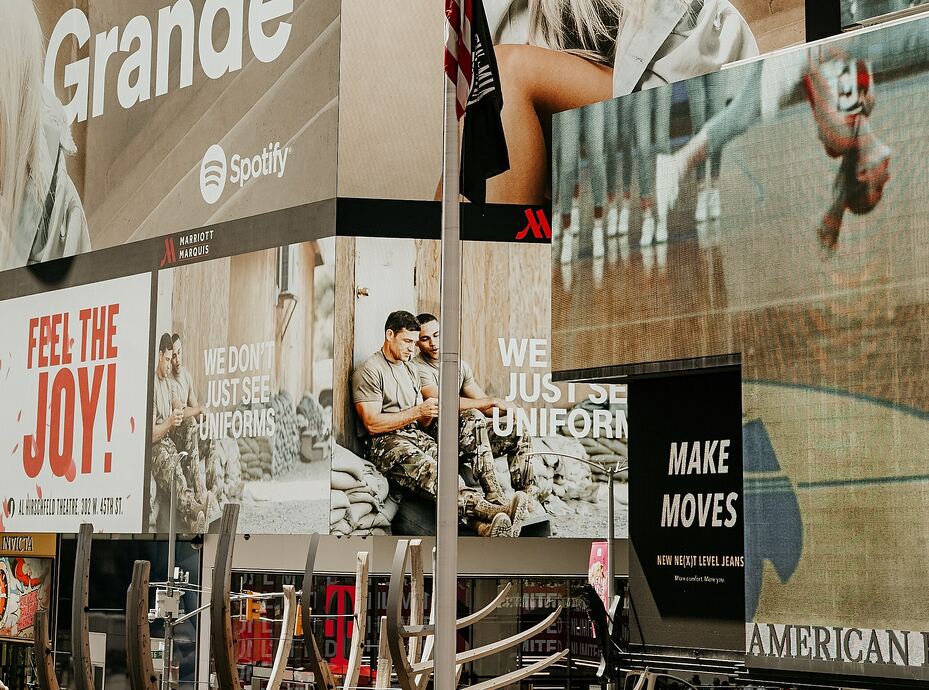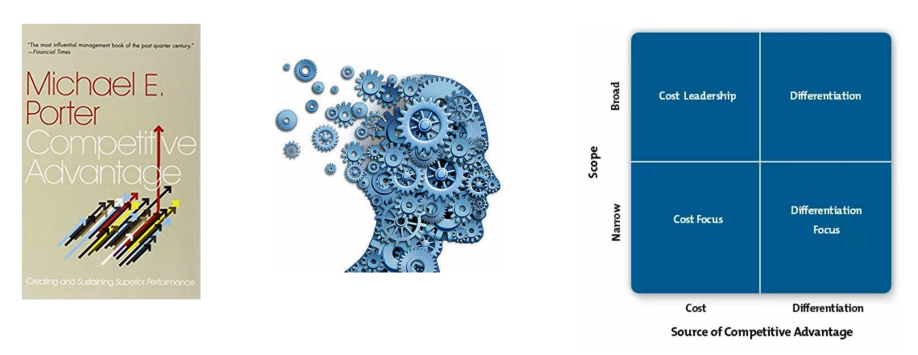The Difference Between Positioning and Competitive Positioning

And where do our positioning and competitiveness come from? If you’ve worked in marketing or sales teams you’ve probably been asked to participate in positioning discussion sessions or messaging workshops. And sometimes people tie in competitiveness to that set of techniques. So where do our positioning and competitiveness come from? Positioning comes largely from Michael Porter and Jack Trout. Ultimately positioning is a component of strategy and also a component of the position that you want to own in the customer’s mind.
What are the available positions? There’s probably more than Michael Porter outlined, but he focused on three. First, a position of cost leadership; second, a strategy or differentiation of uniqueness and the third one is largely identified as focus; a niche, customer intimacy or customisation.

He outlined them along the cost and differentiation perspective, and so positioning is really the target position or problem that you’re going to solve in the audience’s mind. It’s a very powerful place as it often speaks to your brand strength and the loyalty and preference of your customer.
How does positioning differ from messaging?
Positioning statements are sometimes grandiose and bold. They might even say things like “the best” or the “lowest-cost”. When we make these statements, we need to prove them and earned the trust of the customer. We do this with messages. Some people call the messages that support the positioning statement the proof points. But sometimes proof points or basic facts can often lack an emotional connection with an end-user. We can take our game up a lot if we connect emotion, which creates action to those proof points.
Here are two brands to cement this in your mind.
Geiko: An insurance company aiming to own the position of cost leadership in your mind. What is their messaging? One we probably all remember in North America: “15 minutes can save you 15% or more on your car insurance”.
Let’s compare that to a competitor: Progressive. They want to own a different position. They’re not shying away from cost competitiveness, but one of the components of their message is “sometimes we are not the cost leader”. They really want to own the technology space in your mind. So they might come out with a message that says: “We can give you our prices and the prices of our competitors.” Two companies, two different positions and two different messages; each emotionally grabs you and wants you to come to their website and take some action.

So if we have effective positioning and effective messaging, is there any need for something else? We believe that there is. Our reasoning is based on a Harvard Business review article from 2012 that has since been proven. To an extent, we’ve seen the end of solution sales. We used to try to educate consumers on how we solve a problem. We were selling solutions. And that used to be an incredibly effective way to win customers but today, it might not be as effective. With the power of the internet, HBR promotes that customers know how to solve their problems. What we need to do is prove to them that they should use us to solve their problems—essentially hyper differentiate ourselves.
That’s why we need competitive messaging.
What’s the difference between positioning messaging and competitive messaging?
Here’s our thesis.
First, we need to maintain strong and effective positioning statements; the position you own uniquely in the mind of the customer. We need to also go further and specifically differentiate ourselves versus competitors and this means creating preference. In short, we need to explain why they would choose us while also specifically differentiating ourselves versus the competition.
Let’s say Progressive said: “well maybe you wouldn’t save 15% if you were going with Geiko, we have as low prices as they do”. We, as Geiko, need to answer that message. We need to essentially engage the customer to take our preference with some rebuttal. Some refer to this as objection handling but we think it’s more of a competitive rebuttal. A competitive rebuttal needs to be very specific, fact-based, and it needs to emphasize your uniqueness in the mind of the customer.
Competitive Positioning and Battle Cards
So how does this fit into a battle card? A battle card has a couple of sections that have become somewhat standardized. First, there’s a major section of recommendations (or executive summary). Some people call this the silver bullets section. Then, we have a general information area which could be context or background. Then we have a section that covers how a salesperson can win: The sales tactics. This is where competitive positioning really comes out in the battle card.
Competitive positioning is something we should insert into the talk track. So when the customer is looking for specific methodologies that have worked or when they say a competitor claims x, y, and z, competitive positioning shows up and earns it keep, so to speak.
But there can be a problem with this method. The problem is one of scale. If you have ten competitors and each has three different products, you might have thirty different documents to maintain.
Scalability in battle card development is the biggest challenge we have found that has hindered effectiveness in delivering sales material to the teams.
And it’s why we built a CI system. We took this competitive positioning technique automated it. Automation is the future for intelligent battle card techniques and technologies. They are dynamic, using virtual agents to configure and mash up the right content, and competitive positioning is one of those.
CompeteIQ has a proprietary algorithm that really goes down to the product level and helps surface the right competitive positioning statement in the battle cards. And it’s done without human intervention.
If you’re interested in taking this to the next level, reach out to us. I’d be delighted to help anyone who is looking to make use of competitive positioning to hyper-differentiate from the competition.

